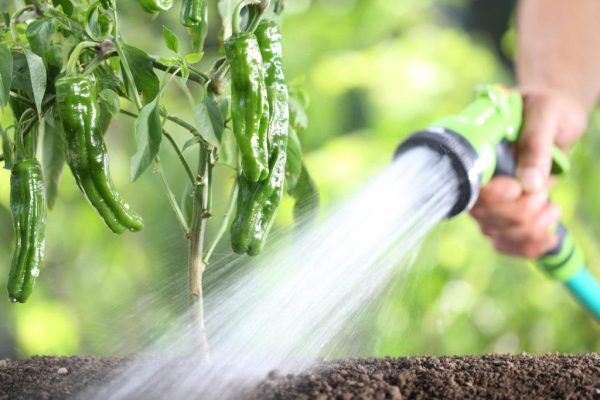So you’re thinking about getting into coco coir – you’ve probably heard a bit about it, you know it’s made from coconut husks and that probably means you’ll need to add nutrients and water often. But what makes coco coir special, and why do growers love it? And if you wanted to try it, what would you need to get started, do you need special equipment or can you just start growing?
Let’s take a look at coco coir and answer these great questions.
What is coco coir? – Growing Guide with Coco Coir
Coco coir is the portion of the coconut beneath the outer husk – it’s fibrous and it is extremely sustainable to produce because they are a byproduct of making coconut milk, oil, butter, flour, and a ton of other great stuff.
It comes in multiple forms, but predominantly we see coco coir come as large, dehydrated blocks that have either been treated in saltwater or have been dried out by other means. Coco coir might consist of more than just coconut fibers, it may also include peat or pith. You’ll probably need to add a second medium to help with drainage since coco coir absorbs and retains a lot of water.

What special equipment and materials are necessary for growing in coco coir? – Growing Guide with Coco Coir
Coco coir can support all different kinds of plants and does not need any special equipment but does require nutrients and other supporting media like perlite to help with drainage. Coco coir is also great as a hydroponics medium and can help plants find some stability in watery environments. As far as special equipment, ventilation, or housing, you don’t need anything beyond what you already have for growing indoors!
What are the benefits and drawbacks of using coco coir? – Growing Guide with Coco Coir
| Benefits | Drawbacks |
| Retains water very well: coco coir inflates and absorbs water, so it can sustain constant growth | It retains water too well, sometimes causing roots to become waterlogged and potentially damaging the health of the roots |
| Can be used in hydroponics: coco coir is extremely flexible and can be used in many different types of growing scenarios | It can lock out magnesium, calcium, and iron because of its high cation exchange rate it tends to hold these minerals |
| It is sustainable: coco coir is a byproduct of other manufacturing processes so it is a great way to be a sustainable grower | It needs help with drainage, so you’ll need to add something like perlite |
| It is cheap: coco coir is relatively inexpensive to purchase – usually, it is sold in large bulk bags that can last years | It may have chemicals in it if it was treated with chemicals |
| It is pH neutral: coco coir does not hold any pH – it is not basic or acidic – so it is perfect to add nutrients to, so you can create the perfect medium | It might have high salt content if the coco coir has been treated with salt water |
| It has great aeration: While coco coir does indeed hold a lot of water, with a proper media mixture you can create extremely well-aerated root systems | |
| It minimizes the risk of pathogens: because coco coir has no pH and does not hold nutrients, it does not carry pathogens | |
| It is reusable: You can use coco coir at least two times before having to replace it – it is just a matter of your nutrients and media mix | |
| It encourages larger plant growth: When used to drain properly, coco coir is an excellent product to improve growing – you can combine it with the best nutrient mixtures for huge yields if you do it right |
How do I grow in coco coir? – Growing Guide with Coco Coir
Coco coir is simple to grow in. In a way, we can treat it like we would treat soil if we assume the soil has no nutritional value for the plant – basically, it is inert. Let’s take a look at how we can use coco coir as a replacement for soil.
You’ll need a mixture of 25% perlite and 75% coco coir – a mixture of 3:1 coco coir: perlite. This will help with water drainage. You can definitely add more perlite if your drainage needs are different – which happens all the time – but the more perlite you add, the fewer nutrients your mix will be able to retain and the faster the water will drain, so you’ll need to feed and water more frequently.
When using coco coir always measure the water runoff with your TDS meter to get an understanding of the amount of nutrients being retained and adjust your feeding accordingly.
How do I water with coco coir? – Growing Guide with Coco Coir
Watering with coco coir is the same as if you were to water with soil: mix your nutrients (if needed) and add water until water starts to run out at the bottom or until the soil is fully saturated. Coco coir will likely need less watering than other media, so be sure to check deep into the mixture to see if it is still moist.
How do I add nutrients to coco coir? – Growing Guide with Coco Coir
Add nutrients the same way you would add nutrients to soil media: ensure that your plants need nutrients (based on your schedule and the TDS reading) and then mix the nutrients accordingly. Coco coir requires the following nutrients:
- Calcium
- Magnesium
- Phosphorous
- Sulfur
- Nitrogen
- Potassium
This is because coco coir has no nutrients – so anything your plant will need to be added along the way. Keep that in mind! You might be happy to learn that there are some great manufacturers out there that sell nutrient mixtures for coco coir.
Coco coir is a simple, approachable way to grow indoors – it doesn’t require any special equipment and it doesn’t need any special attention. In some ways, it is easier than soil because it doesn’t have any nutrients or pests living within it!
As always if you have any questions you can message our Instagram or Facebook and we’ll be glad to help you out! We’re happy you’re on this journey and we want to help in any way we can.
Subscribe to the VIVOSUN newsletter for growing tips, grower stories, and special offers, and get 12% off your first order!
Definitely, the new VIVOSUN Smart Grow System is more likely to enhance your experience.We love the new VIVOSUN Smart Grow System and we are certain that you too will love it once you try it.
And join our Facebook farmer’s community for even more exclusive contests and prizes!
Download VIVOSUN App to get 18% off and explore more information!






